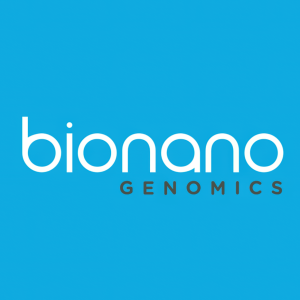Bionano Announces Peer-Reviewed Publication from its Clinical Study Designed to Support OGM as Part of Standard of Care (SOC) in Genetic Disease Testing
- Peer-reviewed publication from Broeckel, et al. describes the second phase of a multisite evaluation of optical genome mapping (OGM) in 627 samples (597 unique samples and 30 replicates)
- Overall, for the entire study, OGM data have been collected from 1,000 samples, including 404 samples from phase 1 of the study
- Concordance for pathogenic variants in all combined samples against standard of care (SOC) methods –
99.5% (995 out of 1,000 samples) - When compared to the rate of finding pathogenic or likely pathogenic variants with SOC methods, OGM increased the rate by a factor of
6% to as much as50% depending on the patient population
SAN DIEGO, Jan. 11, 2024 (GLOBE NEWSWIRE) -- Bionano Genomics, Inc. (Nasdaq: BNGO), today announced a peer-reviewed publication detailing results from the second phase of a large multisite clinical study designed to support establishing optical genome mapping (OGM) as part of the standard of care (SOC) in diagnosis of genetic disease for postnatal patients. The clinical study is designed to compare OGM to current SOC techniques, including concordance, reproducibility, technical success rate and the rate of detecting reportable findings in cases. The published first phase of this multisite study demonstrated OGM’s technical performance and reproducibility across sites versus SOC analysis. This second phase extended the study to include additional samples to further assess the technical performance and clinical utility of OGM for postnatal constitutional disorders and to evaluate OGM in prospective samples and in samples from subjects with neurodevelopmental disorders, including developmental delay, intellectual disability and autism spectrum disorder (ASD).
The sites conducting the study and their principal investigators are as follows:
- University of Rochester Medical Center (Dr. M. Anwar Iqbal)
- Medical College of Wisconsin (Dr. Ulrich Broeckel)
- Columbia University Medical Center (Dr. Brynn Levy)
- Greenwood Genetic Center (Dr. Roger Stevenson)
- Medical College of Georgia, Augusta University (Dr. Ravindra Kolhe)
- Praxis Genomics (Dr. Peter L. Nagy)
- University of Iowa Hospitals & Clinics (Aaron Stence)
- H. Lee Moffitt Cancer Center (Dr. Aaron Bossler)
Key Findings
The peer-reviewed publication describes OGM performance metrics compared to SOC methods for challenging samples from diagnosed and undiagnosed rare diseases. The key findings are:
- OGM concordance for pathogenic variants in all combined samples against SOC methods was
99.5% (995 out of 1,000 samples). - OGM increased the rate of finding pathogenic or likely pathogenic (P/LP) variants over that of SOC by a factor of
6% to as much as50% depending on the patient population as outlined below:
| Patient Population | Number of Samples | Number of Samples w P/LP findings by method | Improvement by OGM (%) | ||
| SOC | OGM | ||||
| Retrospectively collected samples from patients suspected of various genetic disorders | 405 | 70 ( | 91 ( | 30 | % |
| Retrospectively collected samples from patients suspected of ASD | 216 | 32 ( | 34 ( | 6 | % |
| Prospectively collected samples from patients suspected of a genetic disorder | 94 | 5 ( | 10 ( | 50 | % |
Key Takeaways
The study authors reported that results demonstrate the ability of an OGM workflow to detect all classes of structural variants (SVs) with higher resolution compared to current SOC methods, including aneuploidies, triploidy, translocations, inversions, insertions, microdeletions, microduplications, nucleotide repeat expansions or contractions, and absence of heterozygosity (AOH). In contrast to variants that are detected by microarray, which are limited to gains and losses, the variants reported by OGM include all classes of SVs, several of which reside in candidate genes associated with the phenotype. The authors concluded that OGM can offer a simple and streamlined workflow that can detect relevant genomic aberrations and mitigate the need for numerous testing platforms and time-consuming wet lab work, potentially improving lab performance by reducing the associated time and costs.
“Development and validation of OGM assays for postnatal analysis is an area where we believe our technology can have tremendous global impact. The performance we have seen matches our expectations. We are extremely happy with this publication demonstrating OGM’s performance across multiple sites and its potential ability to perform in a single assay what today requires multiple technologies,” commented Erik Holmlin, PhD, president and chief executive officer of Bionano.
“The process of establishing a trial program like this one is made possible by capable principal investigators and leading sites,” commented Alka Chaubey, PhD, FACMG, chief medical officer of Bionano. “We are pleased that these study authors concluded that OGM should be considered as a first-tier method of analysis for postnatal genetic disorders, and that their findings support the utility of a novel tool like OGM to help solve challenging cases in constitutional and rare diseases, including those involving pediatric intellectual disabilities and autism.”
The publication is available at https://www.jmdjournal.org/article/S1525-1578(24)00004-7/fulltext#tbl1.
About Bionano
Bionano is a provider of genome analysis solutions that can enable researchers and clinicians to reveal answers to challenging questions in biology and medicine. The Company’s mission is to transform the way the world sees the genome through OGM solutions, diagnostic services and software. The Company offers OGM solutions for applications across basic, translational and clinical research. Through its Lineagen, Inc. d/b/a Bionano Laboratories business, the Company also provides diagnostic testing for patients with clinical presentations consistent with autism spectrum disorder and other neurodevelopmental disabilities. The Company also offers an industry-leading, platform-agnostic software solution, which integrates next-generation sequencing and microarray data designed to provide analysis, visualization, interpretation and reporting of copy number variants, single-nucleotide variants and absence of heterozygosity across the genome in one consolidated view. The Company additionally offers nucleic acid extraction and purification solutions using proprietary isotachophoresis technology. For more information, visit www.bionano.com, www.bionanolaboratories.com or www.purigenbio.com.
Unless specifically noted otherwise, Bionano’s OGM products are for research use only and not for use in diagnostic procedures.
Forward-Looking Statements of Bionano
This press release contains forward-looking statements within the meaning of the Private Securities Litigation Reform Act of 1995. Words such as “believe,” “can,” “may,” “potential,” “should,” “will” and similar expressions (as well as other words or expressions referencing future events, conditions or circumstances and the negatives thereof) convey uncertainty of future events or outcomes and are intended to identify these forward-looking statements. Forward-looking statements include statements regarding our intentions, beliefs, projections, outlook, analyses or current expectations concerning, among other things, the ability and utility of OGM to detect all classes of SVs with higher resolution, including aneuploidies, triploidy, translocations, inversions, insertions, microdeletions, microduplications, nucleotide repeat expansions or contractions, and absence of heterozygosity (AOH); the ability and utility of OGM to identity VUSs and L/LP finding compared to SOC methods; the ability and utility of OGM to become a SOC for postnatal constitutional disorder analysis and to evaluate samples from subjects with neurodevelopmental disorders, including developmental delay, intellectual disability and autism spectrum disorder (ASD); and the ability and utility of the development and validation of OGM assays of postnatal analysis. Each of these forward-looking statements involves risks and uncertainties. Actual results or developments may differ materially from those projected or implied in these forward-looking statements. Factors that may cause such a difference include the risks and uncertainties associated with: the impact of geopolitical and macroeconomic developments, such as recent and future bank failures, the ongoing Ukraine-Russia conflict, related sanctions, the Israel-Hamas war, and any global pandemics, on our business and the global economy; challenges inherent in developing, manufacturing and commercializing products; our ability to further deploy new products and applications and expand the markets for our technology platforms; changes in the competitive landscape and the introduction of competitive technologies or improvements to existing technologies; failure of future study results to support those reported and discussed in the publication referenced in this press release; future study results that contradict the results discussed and reported in the publication referenced in this press release; failure of OGM to detect all classes of SVs with higher resolution, including aneuploidies, triploidy, translocations, inversions, insertions, microdeletions, microduplications, nucleotide repeat expansions or contractions, and AOH; failure of OGM to identity VUSs and L/LP finding compared to SOC methods; failure of OGM to become a SOC for postnatal constitutional disorder analysis and to evaluate samples from subjects with neurodevelopmental disorders, including developmental delay, intellectual disability and ASD; failure of the development and validation of OGM assays of postnatal analysis; changes in our strategic and commercial plans; our ability to obtain sufficient financing to fund our strategic plans and commercialization efforts; the ability of medical and research institutions to obtain funding to support adoption or continued use of our technologies; and the risks and uncertainties associated with our business and financial condition in general; our expectations and beliefs regarding future growth of the business and the markets in which we operate; changes in our strategic and commercial plans; our ability to obtain sufficient financing to fund our strategic plans and commercialization efforts and our ability to continue as a “going concern”; and including the risks and uncertainties described in our filings with the Securities and Exchange Commission, including, without limitation, our Annual Report on Form 10-K for the year ended December 31, 2022 and in other filings subsequently made by us with the Securities and Exchange Commission. All forward-looking statements contained in this press release speak only as of the date on which they were made and are based on management’s assumptions and estimates as of such date. We are under no duty to update any of these forward-looking statements after the date they are made to conform these statements to actual results or revised expectations, except as required by law. You should, therefore, not rely on these forward-looking statements as representing our views as of any date subsequent to the date the statements are made. Moreover, except as required by law, neither we nor any other person assumes responsibility for the accuracy and completeness of the forward-looking statements contained in this press release.
CONTACTS
Company Contact:
Erik Holmlin, CEO
Bionano Genomics, Inc.
+1 (858) 888-7610
eholmlin@bionano.com
Investor Relations:
David Holmes
Gilmartin Group
+1 (858) 888-7625
IR@bionano.com










